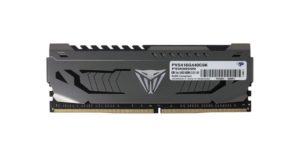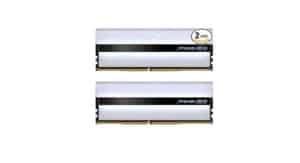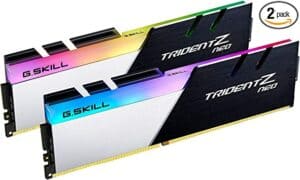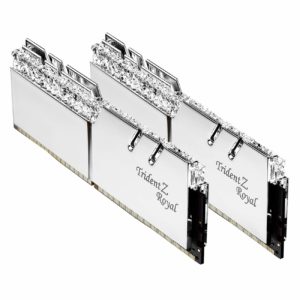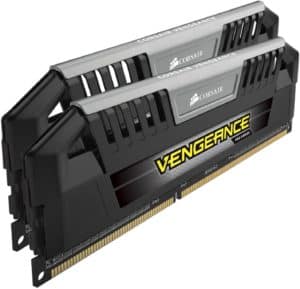Best DDR4 RAM in 2025 – our top picks
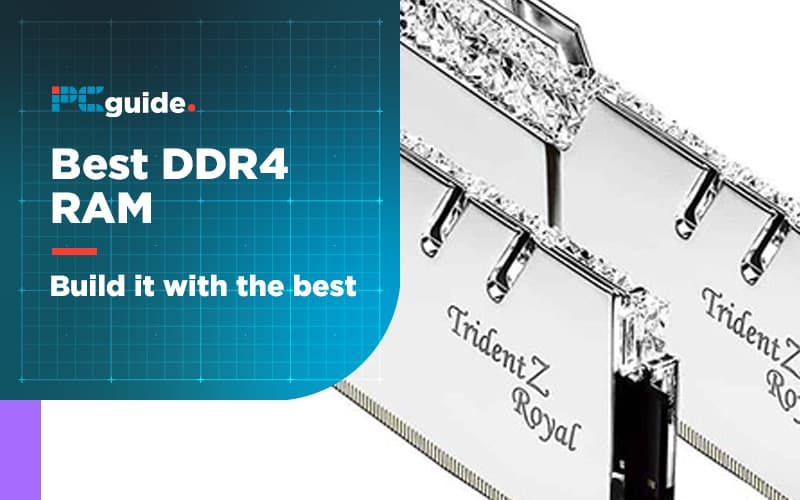
Table of Contents
Finding the best DDR4 RAM is still many people’s top priority, and with good reason – it still packs a serious punch and is great for most gaming rigs. The truth is that DDR4 RAM is now faster than it has ever been. Although AMD has decided to end DDR4 compatibility with their new motherboards, Intel included DDR4-3200 compatibility on its own iteration. This gives many PC enthusiasts hope and time to keep using the tech they love and know best.
The best part about DDR4 RAM (especially for gaming) is its low price and wide availability. You can get a great kit that will give you the best bang for your buck, while those hunting for DDR5 RAM will find it’s still quite pricey and hasn’t reached the peak of its potential speed.
DDR4 may disappear, though. In about two to three years from now, all PC components will be DDR5-only compatible, so you’ll eventually have to upgrade. If you’re looking to future-proof your rig, DDR4 is not the best option, but if all you want is great performance at a great price, then stick to this tech and find in this post the best DDR4 RAM in 2025.
Products at a Glance
How we picked the best DDR4 RAM
DDR4 RAM technology is mature enough for it to remain in a place on our minds. There are several benchmarks that have been showing measured results about how these memory kits work. We based our picks according to the performance of these pieces and the reliability of the company that makes them. If you need more detailed information about gaming RAM kits, check out our best RAM for gaming guide.
Product Reviews
- Great timings (19-19-19-39)
- Good price
- Great subtle design
- Best XMP profiles require specific motherboards
This is one of the fastest RAM kits available on the market with a base frequency of PC4-17000 (2133MHz) and up to PC4-35200 (4400MHz) with XMP 2.0 enabled. You’re going to reach an incredible amount of efficiency and performance with this memory kit.
The great engineering of this piece will ensure you timings of 15-15-15-36 and if you have supportive equipment you will get as high as 19-19-19-39. You’ll find that any game or content creator tool will run amazingly. The most efficient and balanced kit available is the 16GB model, but if that capacity is too small for you, it can go up to a 32GB single kit, so you can upgrade up to a whopping 64GB dual kit.
If you’re an RGB lover, you wouldn’t like this piece all too much, as it has a more subtle look with little to no RGB, but it’s still a great choice for DDR4 enthusiasts.
- Great for overclocking
- Amazing performance
- Better aesthetics
- Hard to find
This RAM works well with any CPU you have, whether it be Intel or AMD. However, the speed and performance are better appreciated in an AMD rig. The TeamGroup T-Force Xtreem ARGB features an aluminum-crafted heat spreader with a unique trench design that delivers powerful passive cooling. The body is translucent and allows the RGB light to shine through, giving it a great and unique aesthetic.
The illumination is one of the best assets of the RAM kit. TeamGroup built the software so the user can have total control of the lighting and is compatible with Asus Aura Sync, MSI Mystic Light Sync, Gigabyte’s RGB Fusion 2.0, and ASRock’s Polychrome Sync software.
- High compatibility
- Great performance
- Included fans
- Low voltage
Corsair builds great RAM kits. In this case, it engineered a memory with built-in fans, a feature that delivers amazing and cool performances. The Corsair Vengeance has hand-sorted memory chips that ensure high performance with generous overclocking headroom and an SPD Speed of 2,133MHz.
The kit offers a maximum frequency of 320MHZ, a voltage of 1.35V, an XMP 2.0, and some really low latency considering the frequency. Besides speed, one of its strongest features is the low-profile height of just 34mm, which allows the Vengeance LPX to fits in most small-form-factor builds and the solid aluminum heat spreader efficiently dissipates heat from each module so that they consistently run at high clock speeds.
- Great XMP
- Good for Overclocking
- Not much added value
- Pricey
G.Skill’s Trident line is one of their most beloved appetites. The firm puts every piece of effort into this piece and the RAM responds easily to the high standards thrown at it. It has great building components, amazing design, and top performance. Besides, you’ll never complain about compatibility because it works perfectly with every machine.
The Trident Z works at a stock speed of 3600MHz, with incredibly low latency. A feature that stands out in this kit is the use of the Samsung B-die ICs that have proven time after time the best benchmark results on the market.
- Will certainly stand out in your build
- Great CAS latency for speed
- Great reputation for Ryzen CPUs
- Expensive
- Probably looks ridiculous
(Image credit G.Skill)
The is the ram that any rapper building his own PC would go for. Without a doubt. We have picked the silver version here, but yes it also comes in gold (google it!)
The G.Skill TridentZ series is a particular favorite among Ryzen enthusiasts, since they have a higher chance of using Samsung B-Dies. (We’ll explain why this matters in the buying guide below.)
Even without that, though, these TridentZ RAM sticks with their 16GB capacity are rated to reach up to 3200 MHz, good for any Ryzen build, but especially good for a Ryzen APU build. Set aside 2GB or so for the iGPU and you’ll be in business for a surprisingly strong 1080p gaming experience, even with some modern AAA games.
The CAS Latency is well-balanced with the 3200 MHz speed here, so that shouldn’t cause any problems, either.
If you are the kind of hobbyist that likes their builds to match beautifully though, good luck finding a GPU and mobo to match with this 16GB kit!
Features and considerations
The first thing to consider when purchasing RAM is its capacity. Depending on which type of user you are, you’ll need more or less RAM for your computer. For example, if you are a high-end gamer, 32GB of RAM will suit you perfectly but if you buy this memory for casual use and normal web browsing, you’d be throwing your money away. So first determine if you are a casual user, intermediate user, professional user, or top-end user.
Once the capacity is set, you need to determine other features, such as frequency. RAM works by reading, processing, and storing information. Thus, the best RAM is the one that completes tasks under low latency in a way that avoids lagging the system.
Intel’s 13th Gen CPUs have compatibility up to 3,200MHz for DDR4 RAM. If you want to go with something instead of Intel, you can pick an AMD chip, which will offer support up to 3,600MHz. Choosing wisely will ensure enough bandwidth to run any game and complete any job tasks you throw at it. If you follow this list, you’ll see the best DDR4 RAM for you. If you want to consider if DDR4 is right for you, check out our best DDR5 RAM if you’re looking for a new build with sufficient support.
What Is DDR4 RAM?
What Is XMP/AMP?
The XMP profile and AMP profile are standards for running RAM at higher clock speeds. They offer pre-defined profiles for easy RAM overclocking, which is ideal for users who aren’t ready to do it themselves.
What does Single-Channel, Dual-Channel, And Quad-Channel mean?
“Channel” refers to how many DIMMs are running in synchronization with each other and has a great impact on speed. Single-Channel is a single RAM stick. This will achieve only half of its rated speed, and serve to bottleneck the CPU. A Dual-Channel is two RAM sticks. These will reach their rated speeds, and serve a literal 2x performance improvement over SC setups. A Quad-Channel is four RAM sticks. These will reach their rated speeds and do offer more performance than Dual-Channel.
How Much RAM Do I Need?
For gaming, we’d recommend around 8GB – 16GB for most people. For general everyday usage, 8GB should be fine.
Our Verdict
That’s all of the current best picks for DDR4 RAM. Whether you’re building an AMD or Intel rig, any one of these should serve you well. Despite the fact that DDR4 will at some point be lost to time, it still has an avid place among PC enthusiasts and builders alike.
DDR4 RAM still has quite some time to give us top-notch gaming nights and great results. This curated list has shown you options that just won’t let you pick wrong, but if you’re looking for the absolute best among the best, you will have to go with the Patriot Viper Steel DDR4-4400. It has an amazing price and leverages a wider range of available features.


